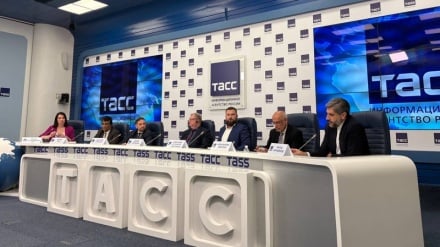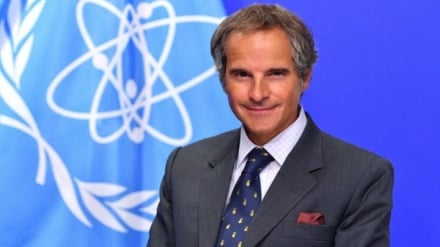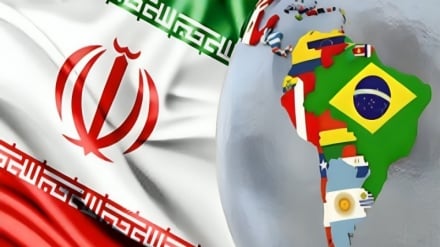International Day for the Eradication of Poverty
There is an inseparable connection between extreme poverty and human rights. This means that the people who live in poverty, many of their human rights are violated. Joseph Wresinski, who founded International Movement ATD Fourth World, realized this important link between poverty and human rights.
In February 1987, he was invited to human rights commission to examine the issue of extreme poverty and human rights. In a speech, he expressed the link between human rights and extreme poverty on the basis of his extensive studies and observations. He said: “Wherever men and women are doomed to live in absolute power, human rights are violated. So, getting together to guarantee and respect this fundamental right is our official duty."
Noting that strong national and international laws must be executed with the human rights approach to overcome extreme poverty, he stressed the moral commitment of society and its citizens to guarantee and respect human rights of poor people.
In 1987, October 17 was recognized as International Day for the Eradication of Poverty and was recognized by the UN in 1992.The International Day for the Eradication of Poverty is a day for dialogue and Mutual understanding between the poor, the citizens and society. This day represents a chance to encourage efforts and campaigns for people who are in extreme poverty, as well as a chance for the poor to hear their concerns and to understand that those who are in absolute poverty are on the frontline of fighting extreme poverty and the ensuing problems.
According to the World Bank, a person is considered poor if his income does not meet the basic needs of life. This level of income is called the "poverty line". Since the basic needs vary in time and in different communities, the poverty line will vary depending on the time and place. Each country determines the poverty line in proportion to its level of development, norms and social values. Information on families' consumption and income is also obtained from a survey of their economic data, which is carried out regularly in most countries. To study the global situation of poverty, we need the same reference for definition and assessment. Since 2005, the World Bank has calculated the reference poverty line for "extreme poverty" and "moderate poverty" at $ 1.25 and $ 2 per person per day.
Jeffry Sachs, in his book “End of Poverty” written in 2005, distinguishes between three levels of poverty, namely, "extreme poverty", "moderate poverty" and "relative poverty."
Extreme poverty includes the families that cannot meet basic needs for survival. They are constantly hungry, do not have access to the health system, are deprived of the benefits of healthy drinking water and sanitation systems, cannot afford for education costs for part or all of their children, and may be deprived of basic shelter or clothing.
Moderate poverty includes those who are not certain of meeting their basic needs. They have to give up the benefits of education and healthcare that many people enjoy. The slightest bad luck, such as sickness, job loss, natural disasters, drought or inflation, can endanger their survival and lead them to extreme poverty. According to the World Bank, they are the people who earn $ 1.25 to $ 2 a day.
Relative poverty also includes the families whose income level is lower than a certain proportion of the national average income. For example, the "relative poverty" line can be defined as having an income below 20% of the average per capita income of a country. By this definition, people may be poor in a wealthy country that is not poor per the extreme poverty criterion. In fact, the "relative poverty" index can somehow reflect the distribution of income in different countries.
Jeffrey Sachs says: "In a high-income country, a person who is relatively poor has little access to cultural goods, recreation and entertainment, as well as high-quality healthcare and education, and other prerequisites for moving to high social levels.”
A look at UN statistics shows that 836 million people in the world are still in extreme poverty. One fifth of these people live in developing countries with less than $ 1.25 a day. Meanwhile, the vast majority of people in South Asia and Sub-Saharan Africa live with less than $ 1.25 a day. The poverty rate in vulnerable and war-stricken countries is very high. One out of every four children under the age of five in the world, does not have proper age-care.
Eradication of poverty is one of the most important dimensions of global sustainable development, and given its importance in the 2030 instruction, there are now many experts in the world who have prioritized poverty and sustainable development for research. The UN is pursuing goals for poverty eradication in accordance with the 2030 instruction, and these goals will be achieved by 2030 as per the UN plan. These are the goals: Eliminating extreme poverty among all people around the world, reducing almost to the half the number of people of all ages who live in relative poverty in every aspect, executing social security preparations and systems within national frameworks including nationwide protection of the poor and vulnerable by 2030, ensuring that every man and woman, especially the poor and vulnerable groups, will equally enjoy economic resources, primary services, rights of ownership, land and other forms of authority, inheritance, natural resources, modern appropriate technology and financial services. Also, creating the power to improve and rehabilitate the poor and vulnerable and reducing their susceptibility against economic, social, environmental, and disaster shocks, ensuring the provision of facilities through the promotion of developable cooperation to provide sufficient supplies and predictable resources for developing, more particularly underdeveloped countries, to implement programs and policies to end poverty in every aspect, and ultimately design sustainable policies at domestic, regional and global levels, based on developmental strategies to support investment on anti-poverty measures.
Continuation of poverty, including extreme poverty, is a major concern for the UN, and at the General Assembly's 72 session, the UN named the 2018-2027 period a decade for eradication of poverty under the title "Accelerating Global Measures for a World without Poverty." The UN said it is important that an international and broad set of measures be taken to coordinate efforts for eradication of poverty, with the effective cooperation of those who themselves live in poverty.
The International Day for the Eradication of Poverty can greatly accomplish such initiatives, because it aims to ensure the participation of people living in extreme poverty; and those with executive abilities, motives and policies take serious measures to eliminate poverty. In fact, this cooperation is a driving force for all efforts to overcome poverty in the world. The UN believes that this great task can only be achieved through the creation and expansion of a real participation with people living in poverty, in order to have a world in which all individuals can enjoy their full rights and spend a decent life with human dignity. Last but not least, the biggest barrier on the way of eradication of poverty are the super-rich in the western countries, especially in the US, who devour the riches and resources of the world at the cost of the lives of hundreds of millions of poor and destitute people around the globe. This is not a propaganda or some outrageous remark. The statistics that are released from to time by the same western countries reveal the fact that the top 1% of the super-rich in the US own more than 50% of the world health and are not intent to give the poor their rights and riches that they have usurped from them through decades.
FK/RM/ME



